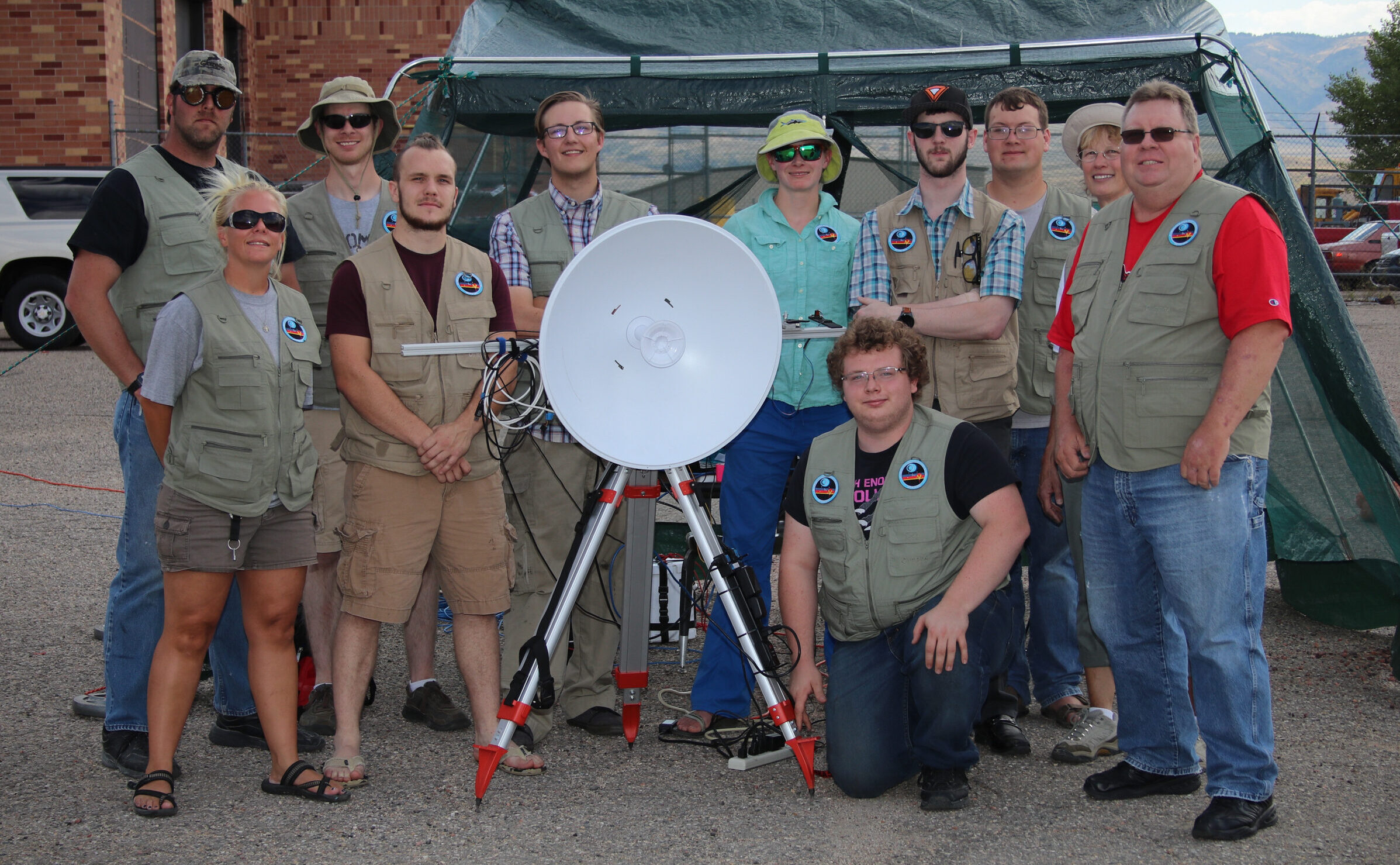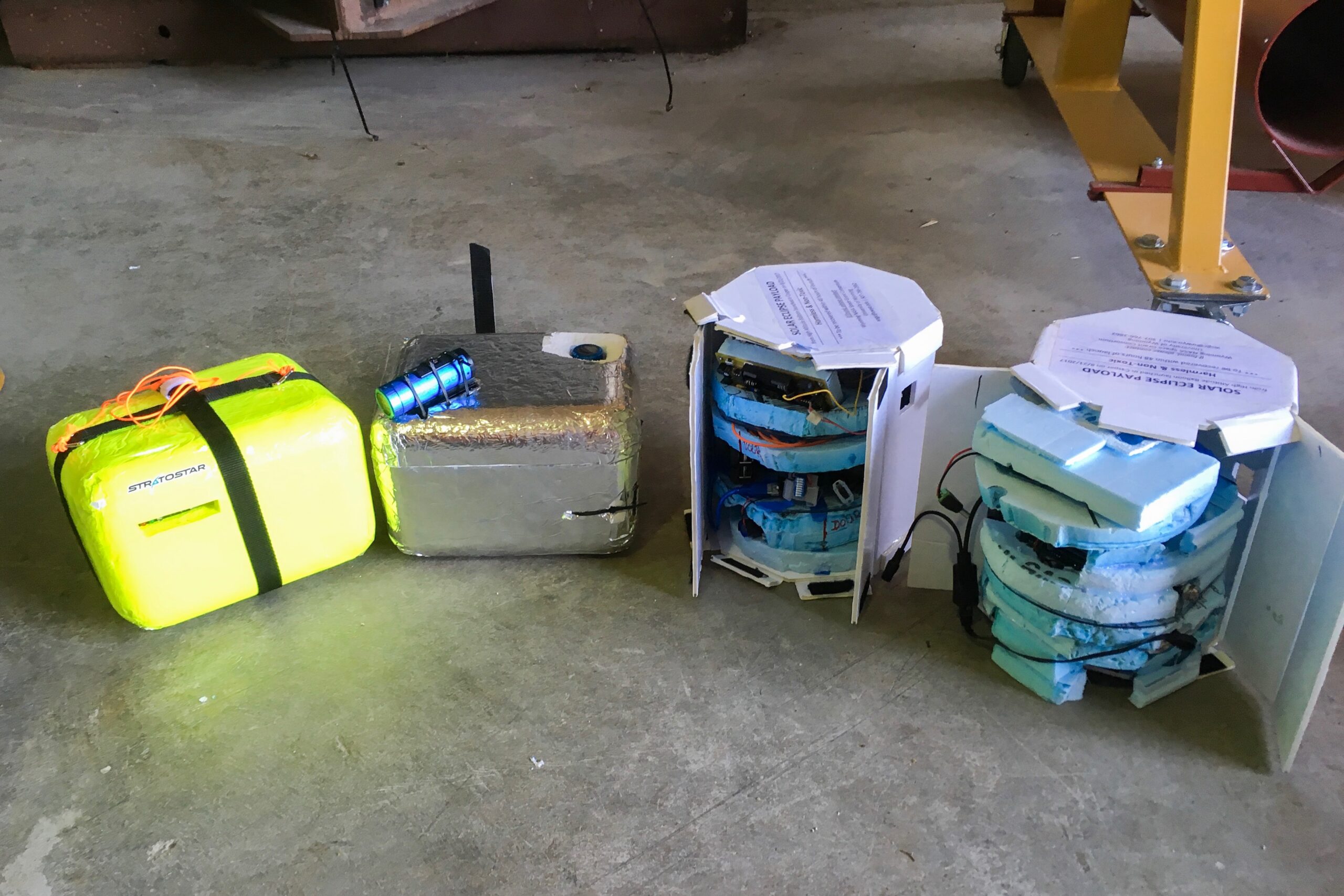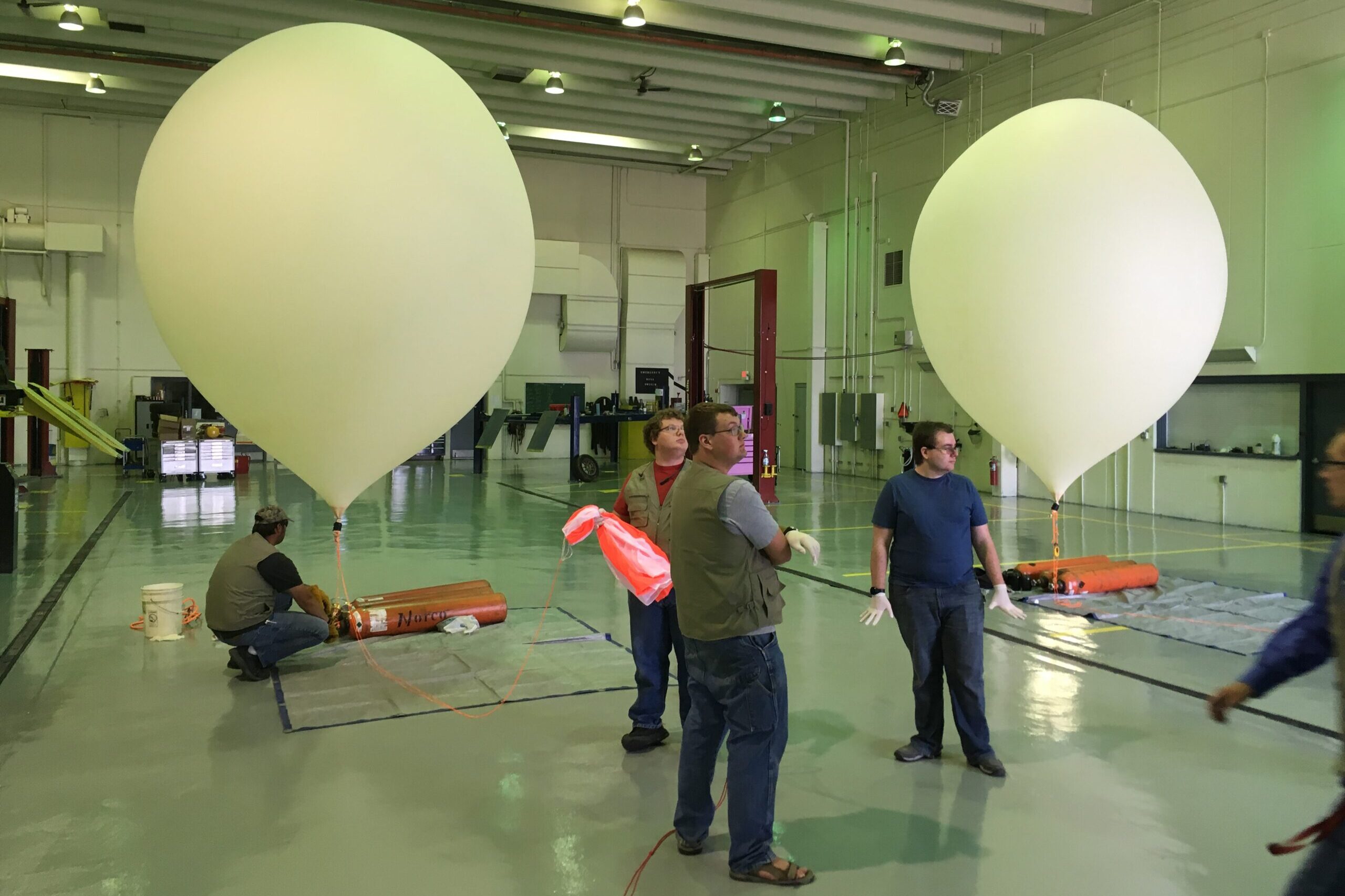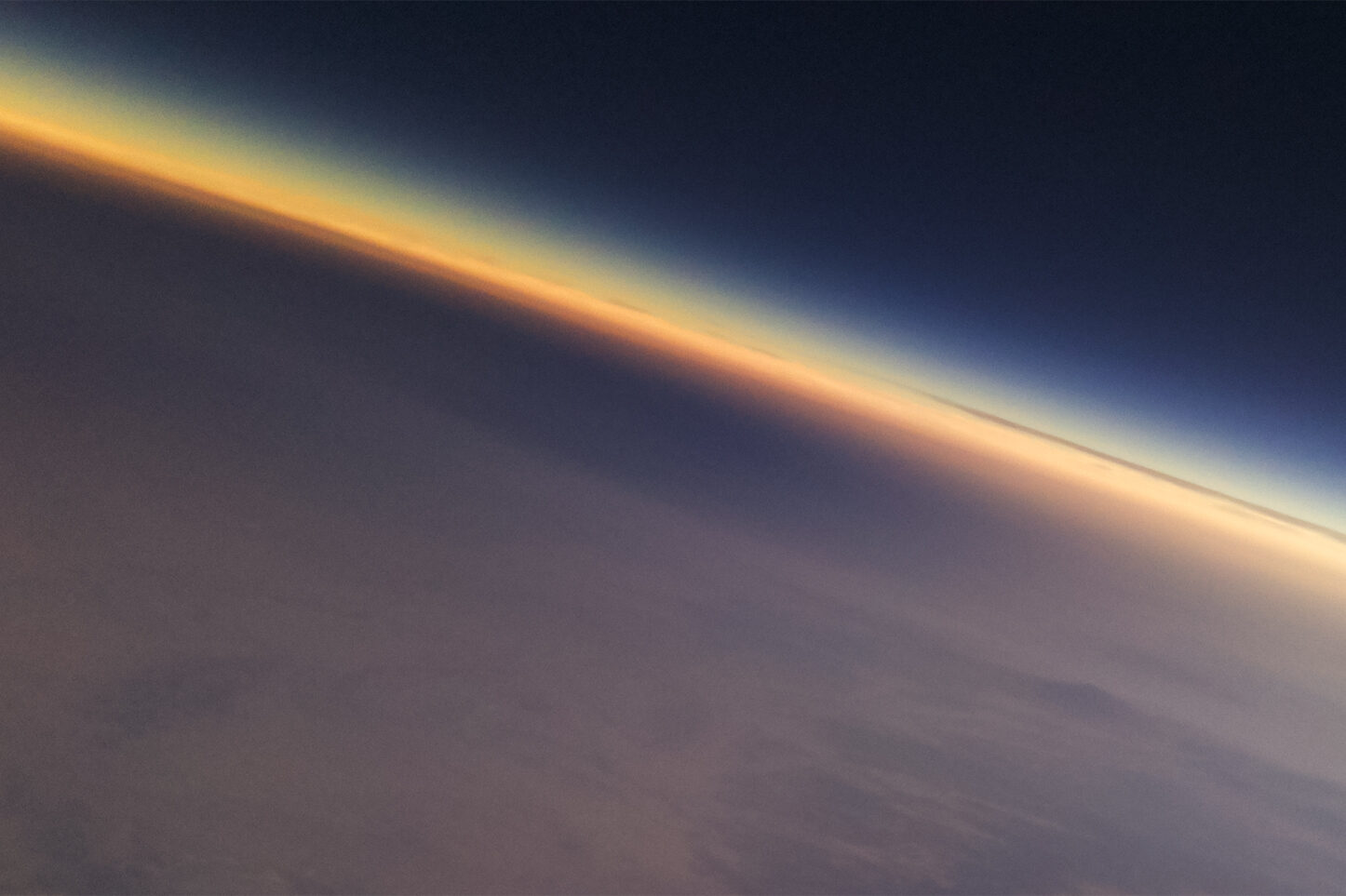2017 Eclipse BALLOONING PROJECT
THE PROJECT
The 2017 Nationwide Eclipse Ballooning Project (NEBP) was an effort led by Montana Space Grant to capture and stream live video footage from within the stratosphere using high-altitude balloons during the 2017 total solar eclipse. From altitudes of 50,000+ ft above sea level, our onboard cameras had a spectacular view of the moon’s circular shadow as it traversed across the Wyoming landscape below. Dozens of teams from all over the United States participated in this unique project, including two from Wyoming. One was led by a small group of educators associated with Central Wyoming College. The other was led by the Wyoming Space Grant in collaboration with folks from Casper College. Both received Wyoming Space Grant support.

OUR TEAM
The “Wyoming Space Cowboys” were a Wyoming Space Grant NEBP team led by two University of Wyoming atmospheric science graduate students (Katie Foster and Phil Bergmaier) and a faculty member from Casper College (Megan Graham). Collectively, these three guided a small group of Casper College undergraduate students throughout the project. Katie served as the team lead, overseeing all aspects of the project, and was the main point of contact between the team and NEBP leadership at the Montana Space Grant. Phil assisted Katie and was primarily responsible for planning and conducting the balloon flights. Megan led development and testing of the electronics payload with her undergraduate students. Some students naturally gravitated toward team roles that were aligned with their own interests and strengths. Others were happy to help out where needed on any given day. In the end, each member of the team contributed in some way to the success of the project.
2017 TOTAL SOLAR ECLIPSE
The team conducted multiple practice flights from Casper and Laramie in the months leading up to the solar eclipse. Then, on 21 August 2017, it was time for the big show. Everyone gathered on the Casper College campus that morning with eager anticipation for what was about to happen. Totality was set to start at 11:42am, lasting ~2.5 minutes. The goal was to have the balloon in the air by 11:00am, which would allow the payload to stream live video from 60,000 ft above sea level during totality. The team inflated two balloons in case there were any unexpected issues with the first launch attempt. There were no issues, although the launch was about 15 minutes late.
By totality, the balloon had ascended to ~50,000 ft above sea level. In the end, this altitude was high enough to allow the cameras to capture some incredible video footage of the eclipse shadow below. The live stream also seemed to work quite well, although the team did end up having to manually point their streaming antenna at the balloon during totality due to some issues with the servo system. Despite this, it seems that all team members were able to experience the wonder and awe of the eclipse for at least some of totality.
Following totality, the balloon continued to ascend before bursting at 92,583 ft above sea level. It then parachuted back toward Earth and landed on a ranch south of Glenrock, WY. A few hours later, after waiting for the crowds to disperse, the team hopped in their chase vehicles and headed east toward Glenrock. The lovely ranch owners were kind enough to escort the team right up to the landing spot, where the payload was patiently awaiting recovery.



THE PAYLOAD
Details coming soon!
TEAM LEADS
University of Wyoming
- Katie Foster – Atmospheric Science PhD Student
- Phil Bergmaier – Atmospheric Science PhD Student
Casper College
- Megan Graham – Instructor of Electronics Technology & Robotics Technology

